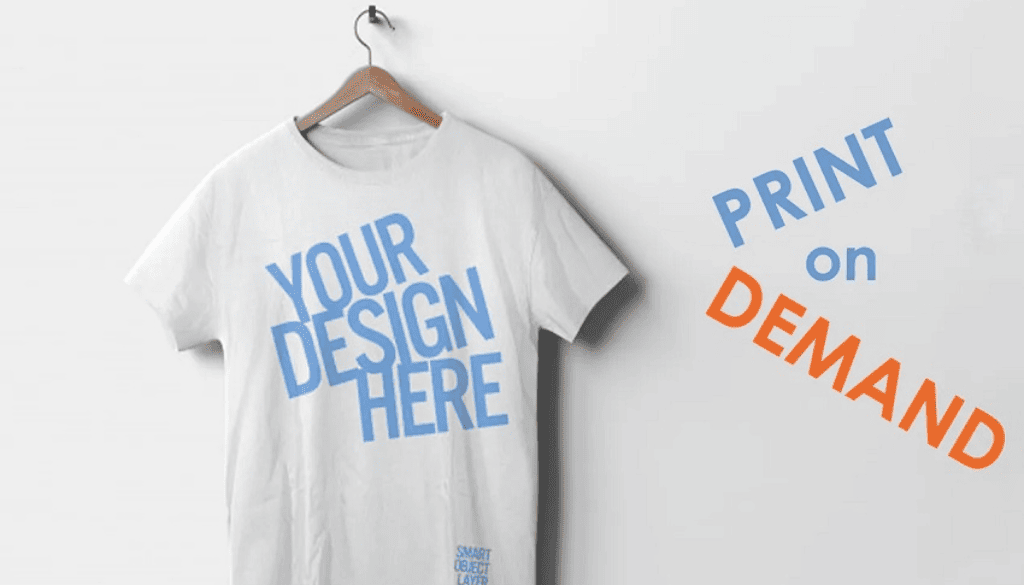Are you just starting your Print on Demand (POD) business and struggling with industry jargon? This article will help you decode the most essential vocabulary in the POD world – from design and production to marketing and sales. Mastering these terms will enable you to work efficiently, avoid mistakes, and grow a sustainable business.
Introduction to the POD industry
With the rapid growth of e-commerce, the POD (Print on Demand) model has become an appealing choice for startups, freelancers, and online sellers (MMO). POD allows sellers to create designs for products like t-shirts, mugs, posters, and tote bags, and only print them when an order is placed. This model minimizes financial risks, eliminates inventory, and optimizes operating costs.
Given its global reach and potential for passive income, POD is not only ideal for beginners but also offers great business opportunities for those looking to build their own brand. However, to operate effectively, it’s essential to understand industry-specific terms to work professionally, reduce errors, and boost efficiency.
Why understanding POD terminology matters

In the POD industry, using the right terminology is critical for success-especially for newcomers. Since POD involves working with multiple partners, platforms, and tools-from design and production to order management and advertising-lacking a strong command of key terms can become a barrier to execution.
1. POD Terms: The Foundation of Your Workflow
The POD industry borrows jargon from graphic design (e.g. PNG files, DPI, PPI, bleed area), printing technologies (DTG, DTF, sublimation), product management (base cost, SKU, variant, mockup), and marketing (SEO, conversion rate, upsell, ROAS). These terms aren’t just “buzzwords”-they’re the working language of platforms like FlashShip.
When you access dashboards or help centers, you’ll encounter many English technical terms. Without understanding them, you may misconfigure products, choose the wrong print method, or set up ads ineffectively.
2. Communicate Effectively with POD Partners and Platforms
Knowing the correct terminology helps you communicate more clearly and professionally with tech support teams, print providers, and in seller communities. Instead of explaining in vague terms, you can pinpoint exactly what you need or what’s going wrong. For example, understanding “bleed area” lets you discuss edge-cutting issues with printers. Knowing what “conversion rate” means allows you to optimize your sales strategy.
3. Understand the POD Production Workflow
Even if you’re not directly printing or shipping the products yourself, knowing the POD production process is crucial to managing your business. Terms like “fulfillment,” “mockup,” “placement,” “variant,” “base cost,” and “print provider” help you visualize and take control of the journey from product creation to customer delivery.
Misunderstanding these concepts can lead to production delays, mispriced products, or poor customer service. For instance, confusing “base cost” with “retail price” could result in profit miscalculations and financial losses.
4. Optimize Advertising and Marketing Campaigns
Marketing is a key pillar of POD. Terms like “SEO,” “UGC,” “A/B Testing,” “upsell,” “cross-sell,” and “ROAS” are essential in digital marketing. Knowing how to apply them can help you create more effective ad campaigns, boost conversions, and expand your brand.
For example, using SEO to optimize your product titles, descriptions, and keywords can help you rank higher on Google or e-commerce platforms. A/B Testing allows you to experiment with content and identify the version that performs best.
5. Speed Up Learning and Troubleshooting
Learning a new skill always starts with understanding its terminology—and POD is no exception. Mastering POD terms helps you quickly absorb tutorials, courses, blog posts, and YouTube videos without having to Google every term. Instead, you can focus on applying knowledge effectively.
Moreover, when operational issues arise—such as print defects, shipping delays, or increased ad costs—knowing the right terms allows you to analyze problems and resolve them faster instead of wasting time on trial and error.
6. Expand to Global Markets with Confidence
POD is a global business. Even from Vietnam, you can sell to customers in the U.S., Europe, or Australia. To scale internationally, you need to use professional industry language to communicate effectively with customers, partners, and platforms. This becomes even more important when building your own brand or working with international print providers.
Common POD terminology (with Definitions)

Below is a detailed list of POD terminology clearly classified for your easy reference and learning.
1. General Terms
| Term | Definition |
| POD (Print on Demand) | Business model that only prints products when an order is placed. |
| Fulfillment | The process of completing an order from production to delivery. |
| MOQ (Minimum Order Quantity) | Minimum quantity required to place an order – usually not required in POD. |
| Niche | A specific target market with unique needs. |
| SKU (Stock Keeping Unit) | Unique product identifier used in inventory management. |
| Mockup | Product preview image used for marketing and sales. |
| White Label | Generic product that can carry the seller’s own branding. |
2. Product-Related Terms
| Term | Definition |
| Base Cost | Original price from the supplier, excluding operating and profit costs. |
| Variant | Product variations (e.g., size, color). |
| Size Chart | Guide showing product measurements to help customers choose the right size. |
| Product Listing | Product detail page on an e-commerce platform. |
| Product Type | Product category (e.g., unisex t-shirt, mug, canvas). |
| Print Design Size | Actual size of the printed image in inches, cm, or pixels. |
| Bestseller | A product with the highest sales in a category or timeframe. |
3. Design and Production Terms
| Term | Definition |
| Design File | File used for product design (PNG, PSD, AI, SVG). |
| DPI (Dots Per Inch) | Image resolution; 300 DPI+ is recommended. |
| Bleed Area | Extra margins in design to avoid edge trimming errors. |
| PPI | Pixels per inch of a digital image. |
| Safe Zone | Area within design that won’t be cut or shifted. |
| Placement | Where the design is printed on the product (e.g., front, back, sleeve). |
| Artwork | The visual design to be printed. |
4. Printing Technology Terms
| Term | Definition |
| DTG (Direct to Garment) | Prints directly onto fabric – great for detailed, colorful designs. |
| DTF (Direct to Film) | Transfers print via film and heat press – sharp and durable. |
| Screen Printing | Good for bulk orders with limited colors. |
| Sublimation | Dye-based print for white polyester fabric. |
| Embroidery | Thread-based design method used on caps, polos, bags. |
5. Sales and Marketing Terms
| Term | Definition |
| Organic Traffic | Free traffic from search engines or social media. |
| Paid Ads | Paid advertising campaigns (e.g., Facebook Ads, Google Ads). |
| Conversion Rate | % of visitors who become buyers. |
| A/B Testing | Testing two versions of content to see which performs better. |
| ROAS (Return on Ad Spend) | Revenue generated per dollar spent on ads. |
| UGC (User Generated Content) | Content created by real users, boosting authenticity. |
| SEO (Search Engine Optimization) | Optimizing content for better search rankings. |
| SEM (Search Engine Marketing) | Paid strategies to rank at the top of search results. |
| Upsell | Suggesting a more premium product to increase order value. |
| Cross-sell | Recommending related products to increase cart size. |
6. Advanced and Business Terms
| Term | Definition |
| Branding | Building a personal or business brand identity. |
| Trademark | Legally protected brand or logo. |
| Copyright | Legal rights for original content or designs. |
| Wholesale | Bulk selling – not common in POD unless for large orders. |
| Private Label | Custom-branded products created for your business. |
| Dropshipping | Similar to POD, but products are not personalized. |
| Print Provider | Partner who prints and ships POD products. |
| Print Supplier | Supplier of printing materials or services. |
| Logistic | The supply chain process of shipping, storing, and delivering products. |
| Product Margin | Profit margin after deducting base cost, platform fees, and ads. |
7. Tips for learning POD terminology as a beginner

You don’t need to memorize every term right away. Focus first on frequently used terms during product creation, advertising, and communication with partners.
Suggestions:
- Read tutorials from top POD platforms like Printful, Printify, Gelato, or TeeSpring
- Watch step-by-step videos to see terms used in action.
- Join POD seller communities to learn from peers and stay updated.
- Create a personal glossary and study a few terms daily to avoid overwhelm.
Mastering Print on Demand terminology is a foundational step toward running a professional and efficient business – from design and production to sales and advertising. Whether you’re just starting or scaling up, knowing the language of the trade will shorten your learning curve, reduce errors, and prepare you for global expansion.
If you’re looking for a reliable POD partner from day one through to scaling your sales, consider partnering with FlashShip. With real-world experience, advanced technology, competitive base costs, and a streamlined fulfillment process, FlashShip is the ideal partner to help you build your personal brand or scale your POD business model efficiently and sustainably.
To learn more or register as a seller, contact us via hotline (+84) 943 024 337 or visit seller.FlashShip.net.

